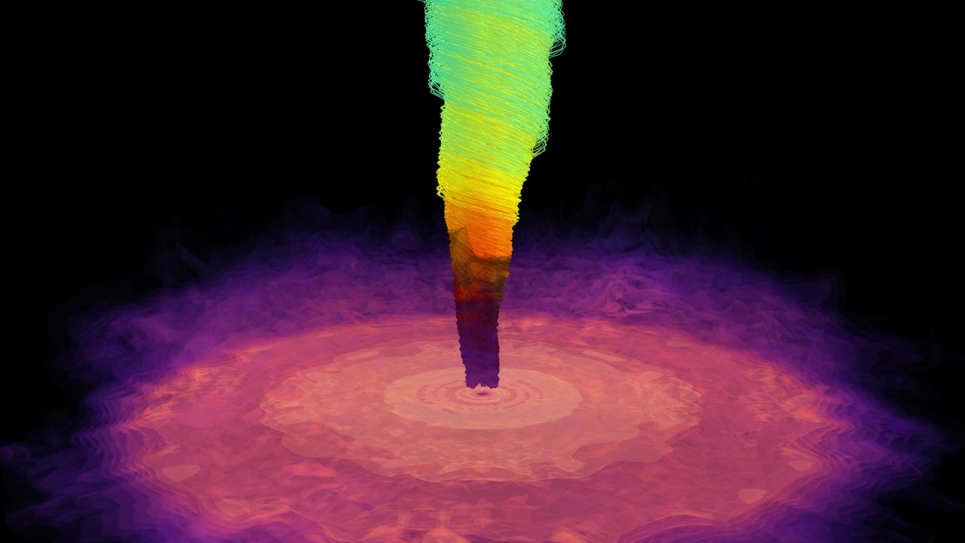
Radiation-Dominated Black Hole Accretion
Accretion of plasma by black holes powers all of the most luminous objects in the universe, including x-ray binaries and active galactic nuclei. However, the inner regions of luminous accretion flows are dominated by radiation, and therefore modeling these sources requires solving the equations of general relativistic radiation magnetohydrodynamics (GR radiation MHD).
This project uses a new performance-portable version of the Athena++ astrophysical MHD code to perform the first calculations of radiation-dominated accretion on black holes using full transport methods and realistic opacities.
Unique aspects of the research include a new GR radiation MHD algorithm based on direct solution of the time-dependent radiation transfer equation, rather than approximate closure methods as have been used in the past. This method employs a novel geodesic mesh to resolve the radiation field over hundreds of angles in each computational grid cell. Moreover, as part of a NASA-funded Theory and Computational Network (TCAN), the researchers’ methods are being extended to include frequency-dependent transport, as well as accurate models for frequency- dependent emissivities and opacities accounting for atomic transitions in photoionized astrophysical plasmas.
The calculations performed in this work, enabled by emerging exascale architectures, will push the frontier of state-of-the-art modeling of astrophysical accretion flows. They will allow the first direct tests of theoretical models of luminous accretion disks, while direct comparison to observations will test important questions, such as whether spectral fitting methods to measure the mass and spin of black holes are reliable
